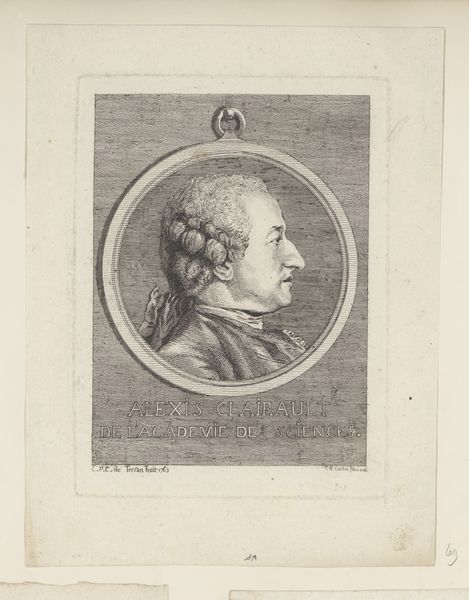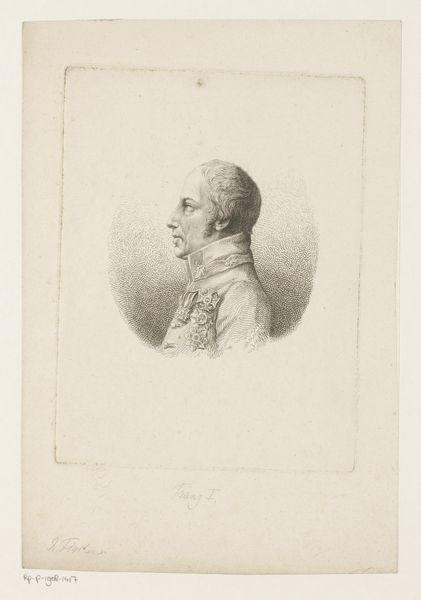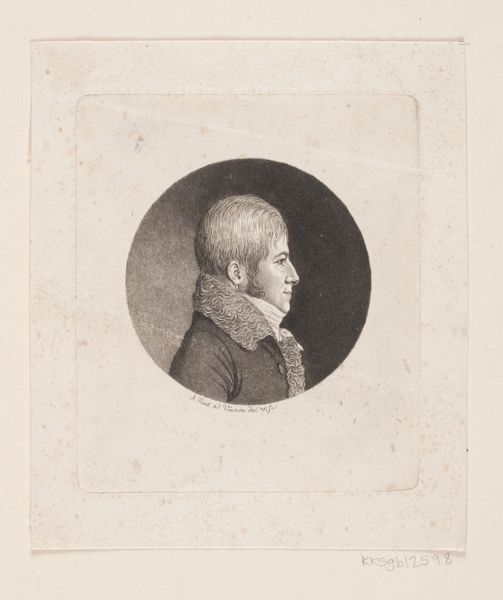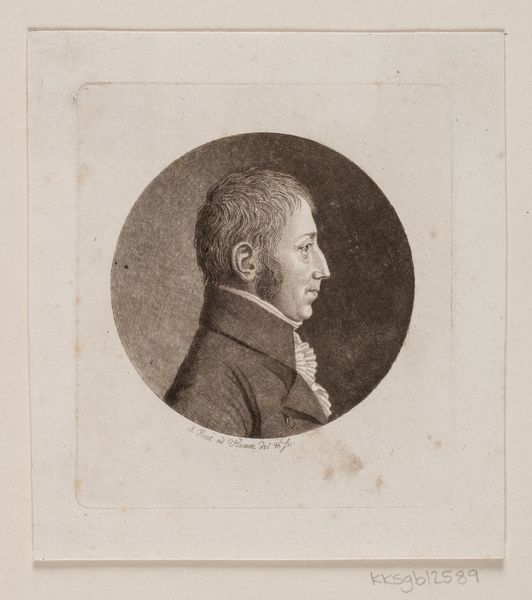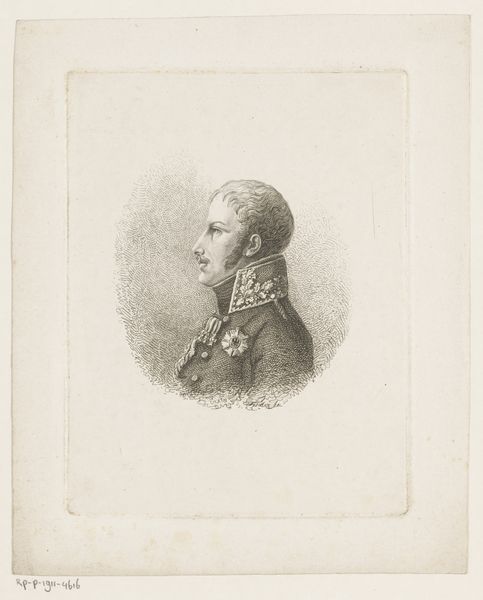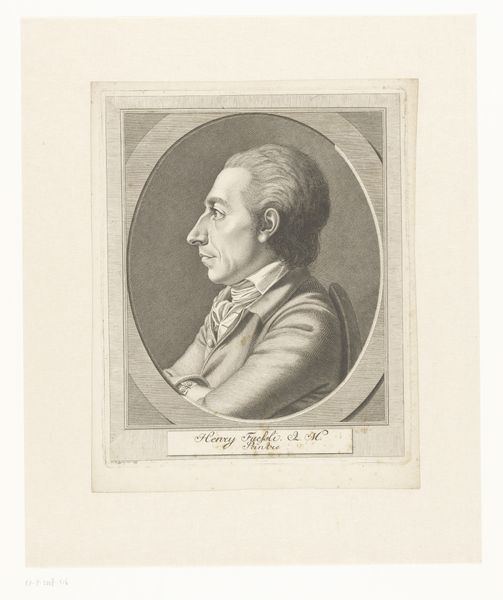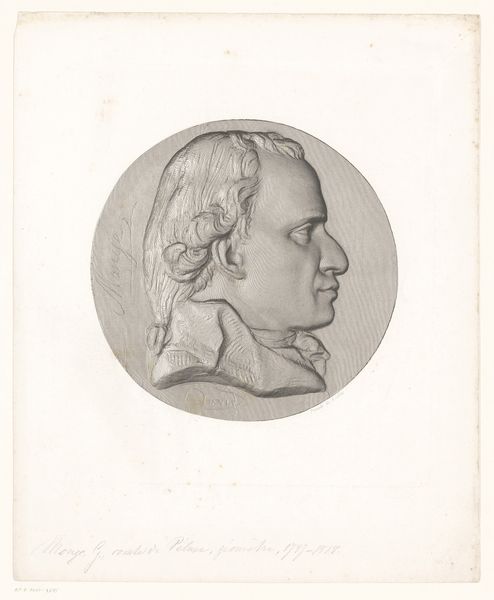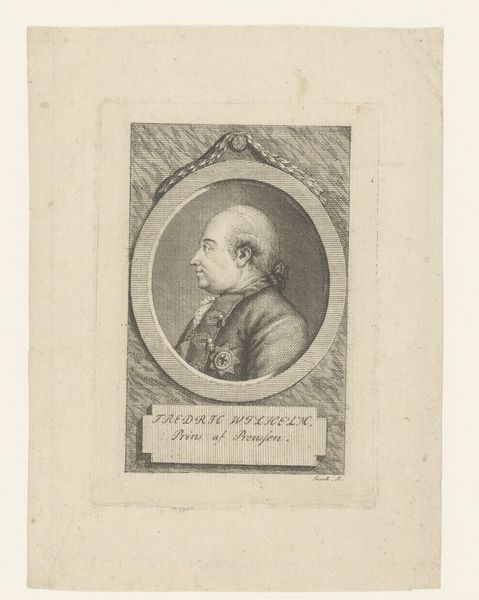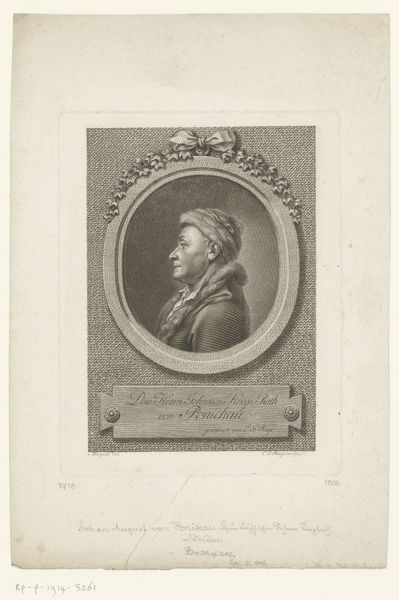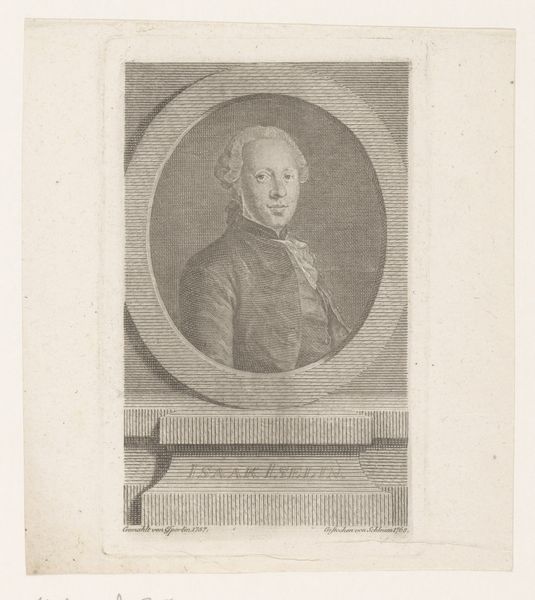
print, engraving
#
portrait
#
baroque
# print
#
figuration
#
engraving
#
monochrome
Dimensions: height 122 mm, width 109 mm
Copyright: Rijks Museum: Open Domain
Georg Friedrich Schmoll created this etching, "Portret van Peter im Baumgarten," sometime in the 18th century. It captures Peter im Baumgarten in profile, framed by an oval. During the 1700s, portraiture served as a powerful marker of social status and identity. Baumgarten's gaze, directed confidently forward, embodies the self-assuredness expected of men in his era. The intricate detail in his hair and clothing also speaks to the privileges afforded to certain classes during this time. Schmoll’s choice to depict his subject in profile harkens back to ancient traditions, yet his delicate etching style reflects the artistic sensibilities of the Enlightenment. It is a style where reason and order were highly valued. Consider how the clean lines and precise details contribute to a sense of clarity and control. Ultimately, this portrait serves as a window into the world of 18th-century identity. The artwork reflects not only personal status but also societal values of class, gender, and power.
Comments
No comments
Be the first to comment and join the conversation on the ultimate creative platform.

